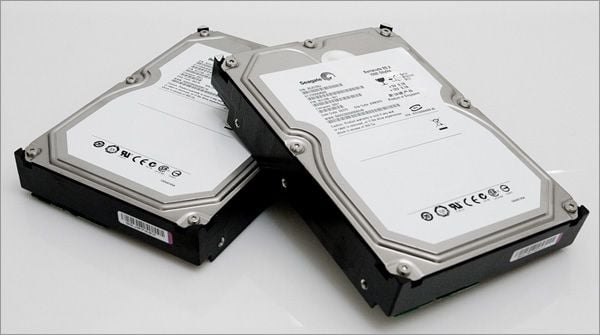Seagate Barracuda ES.2 1TB SAS Hard Drive
Overview
Let’s talk about SCSI for a moment. The disk interface which was once ubiquitous with high-end workstations and servers is now on the verge of obsolescence. With the influx of inexpensive and reliable Serial ATA hard disks and hardware SATA RAID controllers (which can provide excellent performance at a fraction of a SCSI’s price), it’s not surprising to see why legacy SCSI doesn’t even enter the mind of enterprise server and workstation platform buyers, even those diehards of the past.
However, like PATA's evolution to SATA, SCSI has also gone the way of serial connectivity and it still holds its advantages. For example, 15K RPM hard disks are only available with a SCSI or SAS (Serial Attached SCSI) interface, and true hardware SAS RAID cards, when paired with 15,000 RPM disks, can deliver performance that SATA setups simply can’t deliver at this point in time. Not to mention the additional diagnostic, error reporting and recovery capabilities of SAS in a RAID set, that you just can't get in the event of a drive failure in a SATA RAID set. However, the price per gigabyte versus the performance that SAS offers over SATA simply hasn’t worked out in favor of SAS, and as such, the standard has been struggling to stay relevant. This is evident in the new generation of solid state hard drives (SSDs) being offered with SATA interfaces and not a hint of SAS SSD offerings on the horizon.
That said SAS solution providers seem to be reacting, as the barriers to entry for SAS versus SATA have been fading away as of late. SAS controller cards can be had for a little as $70, and SAS hard drives are dropping in price, though historically capacities have trailed SATA by a long shot. Also, some new motherboards offerings are being equipped with onboard SAS controllers as well. A pair of Seagate's new Barracuda ES.2 SAS 1 TB drives.
Today, we’ll be showcasing one of the most significant developments to date, toward getting SAS more frequently into the vernaculars of workstation/server buyers and maybe even a few enthusiasts - relatively cheap, high-capacity SAS storage – thanks to Seagate. Seagate currently offers 10,000 and 15,000 RPM disks with SAS interfaces at a fraction of the capacity versus SATA offerings and as such, much higher prices. However, Seagate just launched their Barracuda ES.2 platform with a SAS interface that offers capacities up to 1 Terabyte (1 TB). Not only is the Barracuda ES.2 the highest capacity SAS disk to date, it’s also the first SAS disk we’ve seen on the market with a 7,200 RPM spindle speed and SATA-like pricing.

Lower spindle speeds typically correlate to far lower prices per GB, and now with high-capacity disks available at more competitive prices, enterprise customers can mix and match their smaller (fast) SAS drives together with slower, but larger capacity SAS disks for bulk storage, on the same controller. In addition, this new large capacity Seagate SAS offering allows high-end or enthusiast end users to consider SAS for desktop builds. It’s definitely an interesting move by Seagate, that caught us by surprise a bit. However, here we are, with a pair of Barracuda ES.2 1 TB drives with SAS interfaces on our hands. Our job is to figure out where these drives fit into the workstation/server storage market that exists today and see if they represent a competitive value in comparison to the array of 1 TB SATA drives on the market. Let’s find out.






